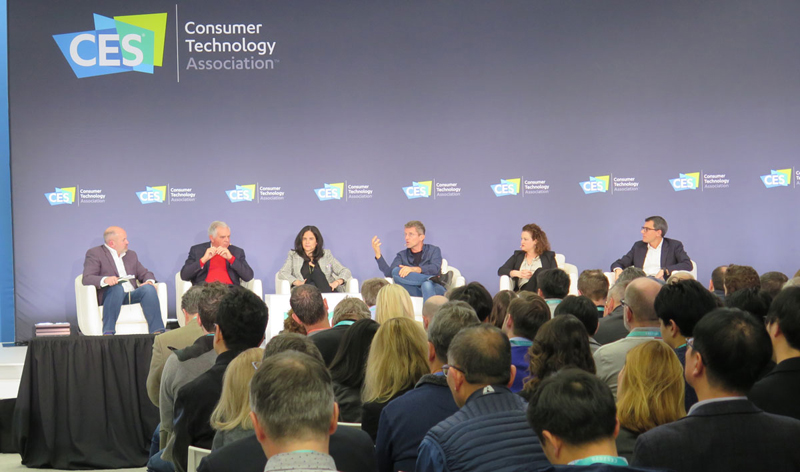One of the biggest topics of discussion during the massive Consumer Electronics Show (CES) in Las Vegas was the future of smart cities and all the innovative thinking and hard work between the cities of today and a truly smart city.
“We’re on the cusp of dramatic disruption,” said Brian Collie, a managing director and senior partner at Boston Consulting Group. “Franky, we have no choice but to get this right. Cities today are already overcrowded and facing many challenges, and as they grow over the next decades, those problems will get more severe.”
By 2050, some 70 percent of the global population is expected to live in an urban area—notably one of the 40 megacities or exceptionally dense urban areas like New York City, Mexico City, London or the Bay Area. Right now, the world sits between 55 and 60 percent depending on your definition of what is an urban area. Think about that, what happens when the population of New York City grows by a significant percentage? You thought the garbage and traffic was bad now, just imagine what it will be like in 2050.
The concept of a smart city also lays the groundwork for a whole set of further innovation around mobility. Today, the consumer wants real-time tracking of their food and goods. Imagine a smart city covered by a mesh network. Instead of a business building a complex GPS solution, it could rely on that network for pinpoint accuracy and instead invest in better delivery solutions or more vehicles.
The buzzing idea of better “multi-modal” transportation could bring actual foot traffic to all those dense urban areas where parking is a headache. In a connected city with accurate measures of traffic, public transit and the roadways that idea becomes much better than the park-and-ride lot. For instance, if someone wants to dine at the hot new restaurant across town tomorrow, it means checking the bus or subway routes, timing the transfer and likely standing around in the cold. But in a smart city, that potential customer could pull up their transportation app, see exactly the time to leave, where to walk and have an Uber, Lyft, scooter or electric bike waiting for the critical last mile.
There’s near endless potential for companies and consumers in a smart city, but there is a lot of work to be done and no clear path forward, but plenty of ideas were posed in a pair of sessions about the future of mobility. During the session titled Smart Cities of the Future: Mobility Innovation touched on how progress could work.
Carlo Ratti, a professor at MIT and director of the Senseable City Laboratory, said the key is just measuring everything going on in the city.
“In my view there is not a single technology that defines a smart city, but it’s the data and governance,” said Ratti, noting that data today is extremely limited.
Cities today are in a critical window of opportunity as the technology around autonomous vehicles and smart infrastructure is not there, but there is plenty to measure ahead of time, according to Clara Fain, CFO of Via, a mobility innovation company that works with cities, education and business campuses.
“Autonomous is not happening today, but it is coming, there are big companies that are investing a lot of money. There’s a window of time now that cities need to seize that while those companies are developing those techs, the cities have to be ready,” said Fain. “In that window, there’s time for cities to build that digital infrastructure.”
Today, it’s something as simple as the mandatory roadway counts that all states are required to do for federal transportation dollars. But it takes future-minded leaders to take the next step in measurement because it’s a costly endeavor for cities and states that requires real and political capital.
“What it really takes is political leadership, you have to have mayors and governors who say, ‘We have a vison,’” said Ray LaHood, the former Secretary of Transportation under Obama. “Cities are cash strapped; states are cash strapped; the federal government is the one place where the leadership can be provided for the dreamers and the architects.”
To move at anywhere near the speed of innovation, however, requires some real partnerships with the private companies who are at home with data and (as of today) have plenty of cash. But to get them to open the books is quite a trick. Uber isn’t likely to give cities a carte blanche to look at the whole dataset, but they could bring real value with a smart slice of data.
“This doesn’t work unless you bring the private players in as partners, you allow them to shape the policy with you. That’s what makes the changes,” said Ratti. “We see special places to create a venture with the private players.”
In another smart cities session focused on aerial mobility, Russel Laughlin, the EVP of Hillwood, a master-planned community in Texas, said partnering with a slew of private companies to design the smart city of the future was key.
“How do you accelerate this curve so the cost comes down?” said Laughlin. “You need to have a testing area in a complicated airspace to test this tech.”
He said master-planned communities like his could be the economic and technological catalyst for that public and private partnership where a dense urban city wouldn’t have to risk safety for innovation and private companies could have a stake and a seat at the table.


